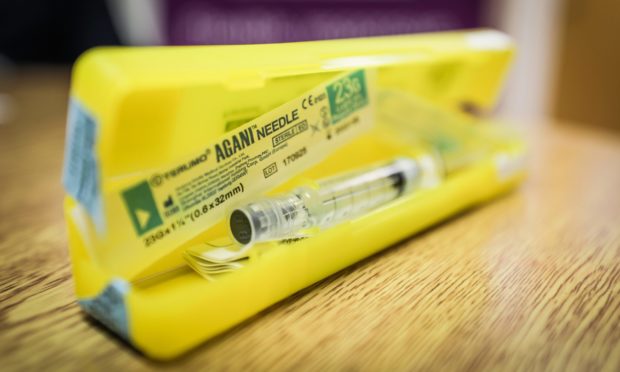A senior NHS Grampian pharmacist has admitted volunteers administering a life-saving medicine may face “anger” from the drug users they keep alive.
Union bosses raised safety concerns over Aberdeen City Council plans to search for staff – including librarians, refuse collectors and city wardens – to train to give naloxone doses to people who have taken drug overdoses.
Reps claim those already giving out the lifesaver, which can temporarily reverse an opioid overdose allowing extra time for an ambulance to arrive, have been met with “very angry” patients in some cases, once they have come to.
And NHS Grampian’s Fiona Raeburn, a substance misuse pharmacist, brought in to reassure councillors on the proposed training expansion admitted it was “certainly something we have experience of”.
Her comments followed input from the secretary of Unite’s city council branch, Mishelle Gray, who said: “There are a lot of concerns and questions needing answered.
“There have also been situations, from staff who have been doing this previously, where they have been faced with someone who has come around and has been very angry.
“That puts staff at risk as well – we can see the benefits of this but there is a lot of work to be done.
“I would like to see something in writing that this is absolutely voluntary.”
The move was agreed only weeks after a warning about a “significant increase” in suspected drug deaths in the Granite City this year.
More than 10 deaths – a quarter of the total number for all of 2019 – were thought to be drug-related in March alone.
The rise was put down to people mixing drugs, with particular concern around benzodiazepine abuse.
Authorities estimate around 2,600 people are currently using opioids – including heroin, methadone, morphine and other powerful prescription painkillers, problematically in Aberdeen.
The council’s plans include finding more volunteers within its community-based workforce in troubled hot spots in Torry and Seaton to be trained to administer naloxone, by injection or nasal spray, before expanding to George Street, Stockethill and Mastrick.
If successful, and if a temporary change in the law brought in during the pandemic is made permanent, the pilot could be adopted across the city.
And through increasing awareness with this work, health bosses hope the number of naloxone kits handed out to family and friends of drug users could double – and lives could be saved as a direct result – by September.
Speaking to the safety concerns of staff, Ms Raeburn said: “When naloxone brings someone round, there is maybe a crowd around the person, they maybe feel disorientated and unsure of what’s happening.
“That can lead to a bit of confusion and agitation in the person.
“But again, it’s very variable and absolutely does not happen on every occasion but it can.
The key part of all of our training is around safety.
“The message is if it’s not safe to take action, the best you can do is call the ambulance and monitor the person from a distance.
“But I won’t sugarcoat that, it is absolutely something that may occur but we provide training to deal with that.”
The drugs expert reiterated the voluntary nature of the campaign, encouraging people to do the training on the basis they could then decide whether it was something they were comfortable with or not.
Council staff governance convener Yvonne Allan asked officers to ensure “the no pressure thing is underlined”.
Her vice convener, Ryan Houghton, said: “Saving a life is an absolutely incredible thing to do.
“But what are we doing in terms of checking up on people who have administered naloxone?
“While the individual may not be aggressive, it may a high adrenaline experience and it would be good to know how we are wrapping our arms around people who have gone through it.”
The local authority’s chief organisational development officer, Isla Newcombe, committed to including means of “closely checking up on” anyone involved in an overdose response.
And other union concerns – that staff could find themselves subject to legal action – were played down, as trained staff were covered by the authority’s insurance.
On top of this, naloxone is not known to have any ill effects on someone who has not overdosed.
Aberdeen Alcohol And Drugs Partnership advice to reduce the risk of harm or death from using drugs:
- Test a small amount of any new substances or batches of new drug and wait to check how it affects you.
- The more substances taken, the higher the risk. This includes alcohol and prescribed medications.
- Wherever possible do not use alone so that someone is there to help if you need them.
- Learn to identify the signs of overdose, get a supply of naloxone and, most importantly, always call an ambulance.
Alcohol And Drugs Action offers a seven-days-a-week helpline on (freephone) 0333 3 448 355 or on 01224 594700 and can provide access to naloxone supply and other support as required.
